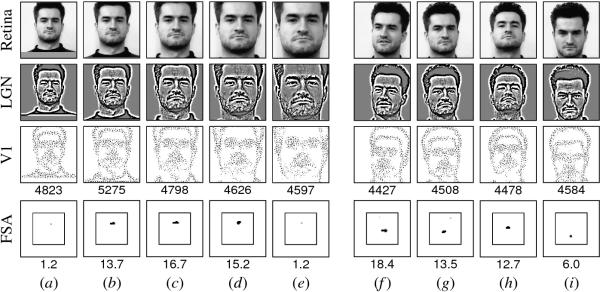
Click on the image to see a PDF version (for zooming in)
Fig. 10.10. Response variation with size and viewpoint. The
three-dot training pattern of HLISSOM matches most closely a
particular size and an upright frontal view. However, the model also
responds to a range of other sizes (a-e) and viewpoints (f-i). The
model activation is again displayed as in Figures 10.6–10.9. In the
viewpoint experiment, the correct FSA location responded to 88% of the
set of 150 images consisting equally of front, left, right, up, and
down views. Most of these viewpoints result in similar responses,
although 100% of the faces looking upward were detected correctly and
only 80% of those looking downward were. Overall, HLISSOM predicts
that newborns will respond to real faces even with moderate variation
of sizes and viewpoints. Photographs copyright 1995 by University of
Bern (Achermann 1995). |